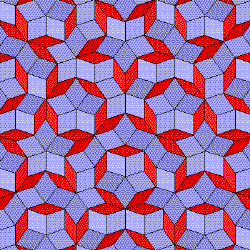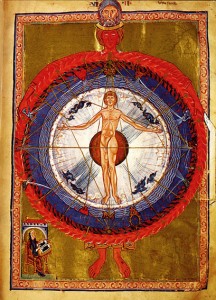This is a version of chapter Eight out of the never published book Grammers of Engagement of Will McWhinny. Will spend more that 10 years to write a new book that contained everything he learnt after writing Path of Change (1997).
Will worked with many people to test his texts and I was one of them. Will died before he could finish his book.
Will gave his versions to me to comment. I am sure Will has adapted this chapter later but I think it is still a very interesting document to read. I really don’t know if I am allowed to do this. I am afraid the whole book will never be published so I take the risk.
“There is only the dance”
T.S. Elliot
An idea, image, or model that has been configured and prepared for enunciation appears as a line of argument, questioning, or entreaty. My question is now, how do we use this enunciation to engage with others to achieve understanding, response, or compassion? The simplistic answer is to get them to be like us, to render both us and them more equally informed and caring. We do this by coupling.
We induce neural paths in the minds of others (or equally in data paths in other systems) that are linked into similar networks of idea. We do it by mounting our propositions in step with the others’ routines and by knowing when the other has completed a cycle of embodiment and is ready for the next cycle of muscle firings.
We learn of their accomplishment when we get a response, “yes, I get what you are saying.” But more accurately, when we hear “I have established enunciating loops that seem to match those that generated your message.” This chapter is about the processes of coupling and the encompassing system that can attain such results. It is about how we get others to be more like us and who ‘we’ become when that similarity is achieved.
In the prior chapters, I articulated the role of coupling in communication and the elements of an enunciation that configure a simple image or model into a grammatical flow of words or symbols. Here I am concerned with the engagement with other systems, with designing enunciations that couple a specific target audience, and with mechanisms to reflectively adjust and augment responses to the audience as a conversation evolves. And when these concerns have surfaced, I find I am back to reflecting on the system that has emerged. I am looking for the meta-language with which we explore the engagements that separate us from the silence we left in the Garden of Eden.
Communication has the overt purpose of transferring information, but its over-all effect is paradoxical. The primary effect is to unite us, at least in understanding if not in compassion. It also has a second effect, making the meta-system of which we are a part more discriminating, more constrained in our expectations, and thus different from the unincorporated environment. Every act of engagement increases the complexity of the meta-system and in doing so increases its ability to engage with others.
It is as though humanity’s task is to incorporate the universe within our meta-system and to internalize all its differentiations, thereby collecting its fragmentation back into a oneness fully aware of what we bring back to Eden. We go about this task by increasing our differentiation to develop the requisite internal variety to match that of the Oneness we would approach. As is often the case we search for variety while reaching for unity and search for oneness while enriching the variety of our worlds. Coupling is the vehicle with which we maintain rhythm and create meaning. It forms the dual with the linear conduit model of communication and an alternative construction to the grammatical development described in the prior chapter.
Entrainment
All communication arises through coupling. All communications are dances that coordinate the rhythmic processes shared among the engaging systems. “Communication is not a transmission of information, but rather a coordination of behavior among living organisms through mutual structural coupling.” Coupling, the instrument of coordination, is established by the physics of exchange and by traditions that associate both human relations and communications with music: harmony, rhythm, tone and tune.
In the 1960’s, William Condon of Boston University School of Medicine pioneered the empirical study of communication as coupling. In the microanalysis of a few seconds of film he was astonished to find how the voice and bodily movements of speaker and listener were coordinated within intervals as short as 20 milliseconds. Condon introduced the term entrainment to describe the coupled behavior. He noted that:
Communication is thus like a dance, with everyone engaged in intricate and shared movements across many subtle dimensions, yet all strangely oblivious that they are doing so.
The phenomenon of entrainment in both subtle and obvious forms is widely recognized. One needs to go beyond its observation to explicate how the coupling is achieved.
Awareness of the other
Coupling begins with getting the attention of other organisms, or more accurately, with distracting the organisms from other engagements so they are able to discern and respond to this engagement. This task I label gaining awareness. Second, by the rhythm of the exchange has be enunciated in a way that the participants can join in the coming and going of exchanges following the pace set by the parties forming and returning messages. And third, the pace itself is enhanced and comes to be preferred by including features in a message that enable the involved systems to anticipate the messages. Later in the chapter I discuss redundancy, attribution, and chaining of ideas. These processes operate in the middle ground between silence and where coordination among participants enables them to notice and incorporate novelty.
That we can communicate with other beings comes from the presumption we are very much like those others, that their receiving apparatus is much like our sending apparatus. We receive actively, by initiating a neuromuscular sequence that mirrors the incoming message, but then inhibit its vocalization. It is a proxied movement, an echo that we comprehend by generating the actions that we would have taken to express the received communication.
The reinforcing behavior is made apparent on listening to a Japanese speaker responding to my request with a nod that I might interpret as indicating agreement. Rather, he is saying, “Yes, I have configured your message in my cognitive system.” “Yes,” simply indicates he shares an enunciation. Awareness of the other is the echo-within of ideas and images evoked. It is not the passive impression of a message on a tabula rasa, the blank slate on which the sensed world is inscribed in the way the philosophers Thomas Aquinas and John Locke envisioned. The echoing sequence is never a perfect copy. In the difference we establish the identity of ourselves and the existence of the other.
All engagements proceed by coupling, but the coupling vehicle is not always successful. Some are too slight, some too powerful, and some just right, allowing an acceptance and response to an enunciation. A coupling that is just right joins systems that link them into an encompassing system of focus and constraints that mutually inform. Much communication is not ‘just right.‘ I begin with those non-coupling conditions.
Too small—Perturbations
A recipient system may sense a slight perturbation as we would feel from the warmth of a fire or the brush of a stranger passing on a crowded street. The perturbation incites a dance at an energy level below that which can capture attention. It does not entrain the chemistry of a cell or establish a memory trace. It may ‘bend’ some neural loops but does not disturb their structures or alert a neighbor. Such minor perturbations are dissipated leaving the system to return to the undisturbed state.
They fail to produce what Maturana and Varela define as structural coupling—their impact on the autopoietic organization of the recipient system is seemingly negligible. We cannot say that these ‘too small’ perturbations have a zero effect for there are couplings beyond the range of human sensitivities that may eventually change the involved systems; the spectrum of potential couplings is vast beyond our comprehension.
Every message induces myriad whorls entraining myriad elements of the complex living structures. Every entrained element of a message adds complexity to the receiving system—wider connections, a broader coupling among neuro-motor loops, and more capacity to respond to the environment.
Too Large—Overloads
Highly energetic perturbations overload a system, tearing apart the autocatalytic loops that hold its definition. Too much energy bifurcates the stable basins of a system’s memory and ultimately violates its autopoietic identity. The overly energetic perturbations leave open non-reflecting fragments of nodes: neurons, bits of stories, and social customs. These fragmented networks are no longer able to hold meanings or link to memory traces.
Short of total destruction, strong perturbation will wipe out the fine structure of a receiving system, leaving it only able to operate in those sequences enforced by the invasive perturbation. To protect the networks of connections, electrical and mechanical systems have features to handle ‘over-modulation.’
With appropriate design, they digitize signals to compress the spectrum, thereby allows the message to be accepted. Human systems have a variety of means to block or censor invasive signals that violate our senses and psyches. Some at the physiological level block the energy that carries the messages; others receive, understand and reject the overwhelming impact. Blocking and the use of censorship disconnects us from the environment and preempts the discrimination they would our systems had more capacity.
Just right—Entrainment
‘Just right’ communication work because it allows systems to exchange energy, thus information, through entrainment. They dance to a just right message. The communication follows from exchanges that take place as the systems draw each other toward a common resonant mode. Systems communicate in the process of being more similar, approaching a harmonious state at least in the domain of the communication. Entrainment stops short of perfect harmony. With perfect harmony there is no exchange. ‘Just right’ is becoming close to harmonizing.
The process of coming close to harmonizing is visible in an old example. Automobiles and farm machinery once had clutches. These clutches consisted of two plates, one attached to the driver motor, the other attached to the wheels, thrasher, or rotary saw. When the operator ‘let in the clutch’ the two plates moved flat up against each other. As the clutch ‘comes in,’ the driver plate begins to transfer energy to the follower plate getting thus it to turn.
At first, the clutch slips and most of the power goes to grabbing, which produces heat. Increasingly the driving plate turns the follower. With full ‘letting in,’ the two turn together. There is no more heating; they form a unit with no further visible communications. The coupling established at the molecular level joins the material of the driver and follower plates in transmitting power to the wheels and cutting blades. This clutching sequence is a model of entrainment.
We can recognize similar entrainment sequences in many other situations: a spoon stirring batter in a bowl, cellular protein molecules latching onto antibodies, two persons entering into conversation, and 100,000 people being captured by Marion Anderson singing God Bless America at the Lincoln Memorial. Viewed as a physical process, each situation exemplifies a tuning of electromagnetic circuits to one another. Plates, proteins, people, and cell telephones that engage in ‘just right’ transfers of energy between the systems.
First, one system is the driver and then the other responses, establishing an exchange among neighbors as they ‘clutch.’ In living systems the dance evokes memory traces, establishes new couplings, and forms new basins of dynamic equilibrium. Approaching entrainments produces learnings, reinforces existing organizations, and establishes new channels of communication that are self -sustaining. Entrainment is a reflective process; it couples, but it also communicates what is different between the involved elements.
In entraining, each system becomes aware of the other in a rhythmic exchange of energy as they pull each other toward synchrony. It is safe to say that living things feel the pull into a larger orbit of the exchanging set. In the movement toward resonance the pull, thus the feeling and energy exchange grow and achieve a peak near full harmony. There, the merging parties experience the maximum exchange of affect. If a situation permits the elements to synchronize even further, the sense of exchange decreases.
The slipping clutch produces heat of exchange; when the clutch is locked it runs cool and no energy is dissipated. Similarly, two people walking out of step disturb each other, calling for attention. When they come to walk in unison their consciousness of each other’s walking disappears. When there is total harmony, there is no pull. When there is synchrony, systems dance in silence. It is in the approach to harmony that systems listen to each other and attend to their relations.
The dance of entrainment never produces perfect harmony. On the way to a stable harmony, interacting systems produce sub-harmonics, supra-harmonics, and varieties of non-linear ‘transients.’ Hums, whistles, and squeals arise as long as there is any dissonance and energy in the conjunction. Every conjunction reverberates over a spectrum of coupled sub-systems, calling up faint memories, reinforcing associations, and preparing possible responses.
Some elements of a communication slip into a system before there is conscious acceptance; our minds organize the grammatical structure of a message before in order that we will understand what has been said to us. Some may take months or years before they have reverberated across a cultural plain and broached a person or community’s consciousness; histories tell us what we could not see at the time of the events. Messages at the extremes that do not enter consciousness on their receipt may accumulate their impact to eventually dominate the involved systems; little anxieties and grand cultural myths form webs that constrain our lives. Our origins are ever present as Jean Gebser reminds with his book title (1985).
Acceptance and Inhibition
Action is the way of life. Movement, actual or proxied, is all that living things can do. The particular power of developed living things is the ability to generate and organize a variety of action sequences. That power is one definition of intelligence. The genius of the human species is not just generating meaningful sequences but managing them. We have developed the mechanisms for generating and growing sequences by accepting messages from the environment.
We have also learned how to not accept new or modified sequences by inhibiting their growth and expression. The choice to accept or reject is first built into our physiology that limits our sensory inputs to the classes I identified above as ‘just right.’ Within the acceptable range, messages initiate couplings that reverberate throughout the receiving system. On engagement with its environment, every biological or organizational system, experiences a cascade of dances that initiate responsive neuromuscular sequences. This effluence has to be managed to produce responses and create new neural paths.
Some messages receive immediate attention as triggers for muscular attention. These are accepted as the ‘stimulus that get a response.’ They produce immediate the firings of muscular sequences such as those that pulls the finger from the fire or rebalances a falling body. Such are the visible responses, but as with a struck bell, stimulus/response messages also reverberate across the system, releasing adrenaline, evoking memories of prior emergency responses, intruding in a hundred ways into the system’s organization. The example is physiological but the reader can appropriately extend it to the phenomena of social organizations.
Most exchanges penetrate beyond the reflex response. More often, they engage with the sensory cortex and fan out into the neuromuscular organs. Through coupling, messages set off reverberations in stored action sequences and confront the remembered sequences with novelty. Acceptance is like chiming; one message produces innumerable couplings and innumerable that compete for attention.
The breadth of the reception is a function of the richness of the receiving system: not everyone catches a double entendre or an in-joke told at a cocktail party, or does everyone have sufficient plasticity to modify existing sequences to learn. The acceptance process parallels the generation of utterances. Sounds evoke the sequences that would generate syllables; syllable sequences are combined to form word sequences; and words are formed into grammatical statements to be presented to the conscious mind. These are all proxied sequences that would become utterances; that is, the muscular sequences would be released if they were not inhibited.
Responses to the environment generate self-stimulating reverberations that tend to reinforce the entire cascade of couplings. Reinforcing habits of action and memories is functional for the organism, up to a point, but too much is destructive. Reinforcing can produce reverberations, that is, oscillations that come to dominant the neural system. Crick and Kock noted that without inhibition a system “would be thrown into uncontrolled oscillation, as in epilepsy,” to which Cotterill adds, “making every transaction with the environment a hazardous one. But even when effectively distributed reinforcement can be destructive, for it eventually overloads the system’s capacity and decreases the plasticity of the neuromuscular network. If the environmental response is allowed to cascade unrestrained throughout a biological organism it eventually closes off capacity to further adapt, that is, learn.
The overload condition is visible in many living species such as the giant pandas that can feed only on a particular species of bamboo. Coupling and the runaway responses to simulation occur in autocatalytic systems everywhere in nature. In most living forms, propagations are control by competition for resources. However, animals have made a radical improvement in performance by internalizing the choices of what is to be inhibited. Early in the evolutionary path, animals developed ingenious devices that inhibit the runaway processes. It is a choice rather than an imposition. Making the choices about what is not be to retained gives animals the ability to perpetually learn and diversify.
Inhibition is the neuromuscular process that blocks either overt expression or propagation of messages through the organization. It works first at a cellular level by inhibiting the firing of synapses. It also operates at higher levels by consciously stopping muscular firings that that had been identified for execution. Inhibition serves a number of functions by its ability to block synaptic activity:
- Gating. In neurons, inhibitory synapses corral the flow of messages. In combination with the excitatory synapses, they route acceptance through a network, closing ‘gates’ to direct a firing sequence along a path. Gating is a logic function which sums excitatory (positive) and inhibitory (negative) signals to allow signals to flow along neural paths.
- Coordination of movements. Working at a higher level, inhibition contributes to the rhythm of movements, by periodically inhibiting neuromuscular sequences. For example, as an infant learns to crawl, it inhibits muscle firings that activate the left arm and right leg, thus providing the base for the right arm and left leg to move forward. A moment later, the converse inhibition continues the forward movement; the right arm and left leg are now inhibited, freeing the other pair to move. Inhibition establishes the rhythm of movement that we see displayed as a centipede manages the flow its many legs or a drummer keeps his beat.
- Blocking dysfunctional responses. Inhibition is expressed by blocking sequences that carry signals. It stops motions judged to be harmful to an organism, such as a loss of balance, eating noxious substances or using socially incorrect language. It can be used consciously to stop habitual behaviors that become viewed as damaging. And, in the context of communication, to prevent noxious messages from entering our consciousness—“see no evil,….”
- Learning. Learning is a natural result of the reinforcing reverberations that flow through neural and organizational systems. Without inhibition reverberation will clog the limited systems. In simple organisms, the memory is filled and the system becomes unresponsive to fresh information. With limits on its resources, the nervous system would drive itself into fixed routines. Part of mind’s work is to remove links between sequences to allow for alternatives, either for explicit learning or serendipital creativity. Without the ability to prevent efferent motor sequences from initiating, there would be no room to introduce new sequences, that is, listen to something not already established in one’s memory circuits. As silence is to communication, so inhibiting is to learning. Inhibition opens the door to novelty. As Cotterill suggests, while it may be that while humans lack ‘free will’ but the evidence supports their access to ‘free won’t.’ (1998)
In spite of its bad name, inhibition is critical to engagement in two major ways as described here. First, it enables coordinated rhythms of movement and second, it enables a system to make choices about how to use resources. Acceptance provides access to resources; inhibition provides the control that makes those resources useable. Both are required for there to be awareness of the other.
Music of the Spheres
Entrainment is a process in time. It takes time for a photon to bounce between electrons and for amino acids to couple into a protein; A it takes time to hear what the other person (the other system) is saying; it takes time for the hermeneutic circles to close on an international treaty. At every level of engagement, entrainment is a two-way process that sets up a rhythm of coming-and-going that sets up expectancies and readiness to respond. An enunciation proposes a pace of exchange directly by a choice of words, the urgency of their expression, or the request for response.
A response can follow in milli-seconds after an alert of danger to a loved one or follow weeks of rumination on an ethical issue. While the over-all rhythm of our engagements is bound by genetics and technology and evolves with the culture, every exchange establishes a natural rhythm for the particular participants. For atomic particles, the determinants are electromagnetic forces; for simple organisms, it is the biochemistry; but animals have attained the freedom to set the rhythms with conscious intentionality in shared music, conversation, and the imagined response of distant audiences sympathizing with our thoughts and emotions.
Pacing, a music, develops through a harmonizing across the spectrum of enunciations and responses. In human communication, rhythm orchestrates the voices, expressions, e.g., sentences, reception processes, rhythms of the body, demands for attention within and among the participants, and long waves of cultural accommodation across the whole set of conversants. A conversation is effective when the pacing of each element synchronizes with the others: all the phonemes of a word need to be completely expressed before a speaker begins to generate the next word. Interruptions in this flow produce stuttering, in speech or thought.
The breathing must enable a sentence to be phrased, expressed on a single breath or broken in relation to its grammatical structure. The listeners simultaneously construct the sentences in their own neuro-muscular structure, or pass them through an organization’s network to get acceptance, then in to prepare to receive the next enunciation. Conscious processing introduces delays in transmission, taking time to search and test, and readies the neuro-muscular systems for new receptions. Inhibiting a misinterpretation also takes time. If first interpretations are recognized as inappropriate, their flows must be inhibited so that new neuro-muscular proxy sequences can begin.
When the conversation introduces material novel to some of the participants, the pace must slow to allow for searching and testing for internal dialogues. These detours all take time. The design and conduct of engagements needs rhythms that accommodate these delays to allow sufficient time for participation and exploration.
The rhythms of discourse vary the ways in which ideas are enunciated. The participants have to be prepared join in the rhythm in order to interpret the enunciations. Shakespeare began many of his plays with ‘throw away’ dialogues to give his audiences time to settle into the mood of his drama, to begin to listen. That is one of the ways by which enunciations establish the pacing. I comment on three other methods that facilitate engagements: redundancy, bundling, and chaining.
Redundancy
Redundancy is introduced into communications to enhance the ability to anticipate and be prepared for what is coming—once we know a tune, we can anticipate its sequence from hearing the first few notes. We can sing ahead of the music, for we have constructed a rendition of it in neuromuscular sequences, in memory loops.
Once we have identified the song and begun singing along the rest of the performance is formally redundant, though their actual play reinforces the memory trace and maintains the coupling of source with the listener. Spoken and written languages contain highly redundant sounds, letters and words. In English, the letter ‘u’ almost always follows the letter ‘q,’ and the word [find example word] is almost always followed by [example].
Redundancy is essential to coupling. It allows the receiver to keep pace with the incoming message. In comprehending verbal communications, the ability to anticipate enables the receivers to rapidly reconfigure messages to their own mode of thinking. It is misleading to imagine that we ‘take in’ messages. Rather receivers create muscular sequences just as if they had spoken the words. The message, reformed into the unvoiced sequence is accepted with a caveat that it might be a misrepresentation.
If a mismatch is detected the proxied muscular sequence is inhibited and a search starts for a new hypothetical configuration. In general, we don’t need to even take in a whole message to understand it; a comparison process tests the hypothesis that what one generates is equivalent to what was received. If the message is full of novelty, one needs more time to integrate the words into a meaningful context.
Generating a phoneme as part of an expected stream may take 25 milliseconds, but searching for a correct one may take 250 milliseconds. All the forms of redundancy may combine to produce over-all expectancy in excess of 90% in English texts. High redundancy allows us to flow with the music or speech. We dance with the assumption of near perfect anticipation. We are entrained by songs and we finish our spouse’s sentences.
The use of redundancy aids coupling by regularizing the flow of absorption. With a highly redundant message, the senders can anticipate that after a given interval the audience will be with them. Most of the audience will generate an internal response that readies them for the next, highly redundant message. Their neuro-muscular sequences are reset to start when a signal indicates the next musical bar, poetic stanza, or semantic enunciation is flowing. And conversely, the speakers have reset their programs to generate proxies of the other’s response. The in-flow and out-flow of messages involves couplings in some regions of the spectrum of exchange.
At times the rhythm is obvious, and at other times, it is inaccessible and its audience is incapable of sponsoring a sympathetic answer. In earlier historic era much speech was explicitly rhythmic. Epic poems such as the Iliad relied on rhythm to aid the narrator’s memory and supported the audiences’ sense of belonging to the community of heroes that the tale immortalized. Now we use more subtle devices. Theater and cinema rely on the audiences’ recall of the beloved dialogue and comedy skits.
Authors fall back on familiar metaphors and representative examples. However, with development of distant media, printed materials, electronic transmissions and computer generated images, the immediacy of communication has diminished, weakening the rhythmic element, and forcing communications to rely on internal reconstruction of the messages carried by the media. Academic writers and lawyers seem to ignore their readers’ need for rhythm and flow, forcing us to reconstruct what ‘the author must mean,’ resorting to rewriting the material in our heads. The reconstructing efforts interfere with coupling.
The readers feel distanced from the author and unable to assess the agreement of their reconstruction with the original. It is not surprising that deconstructionists such as Derrida asserted that the meaning of a text is weakly associated with its author’s intent. Without direct coupling, conveyance of meaning depends even more heavily on redundancy in rhythm, word, and sense.
Attribution and bundling
All languages provide us with the ability to evoke in others complex ideas and events using simple labels. Every adjective and noun brings to the mutually informed participants descriptive qualities and bundles of elements and the verbs organize sequences of acts. Attribution characterize an entity by assigning it a quality, bundling packages elements into a whole, and grammatical sequencing gives meaning.
These tools of aggregation allow us to convey ideas quickly, to use shared understanding to identify differences. The technical vocabulary of a discipline gives participants a ‘short hand’ to speed their communication and these abstractions allow the conversation to get to a point quickly. Using high levels of attribution and bundling ideas under a few labels provides efficiencies in communication and rhythmic couplings that accompanies sharing an image, a piece of music, or an emotional experience.
The ability to hold highly attributed discourse is itself a bonding experience, coupling participants emotionally. Pervasive use of similar attribution schemes provides assurance of future coupling, of being in tune with one’s social and intellectual environment.
With far less packaging, being direct allow more intense discourse appropriate to exploring feelings, searching for ideas, resolving conflicts, coming to new meanings. For example, recalling a person’s conversations, eye contact and bodily stance, the responsiveness to our interventions, and indicating how different he is from some another person with whom we are familiar, produces a more involving engagement calling for a more relax pacing, perhaps a more intimate coupling than is produced by an incisive psychological classification or associating him with some famous personage. Each level of bundling and attribution requires a attention to matching the pace of an engagement, and the demands it places on each of the participants.
Sharing common levels of attribution and bundling contributes to coupling, in part by allowing the pace of the communication to suit each participant’s favored pace in dialogue. A dialogue constructed between people using significantly different levels of attribution is threatening to everyone, for it denies the use of their core rhythms. The anthropologist, Edward T. Hall writes of failures experienced by Caucasians trying to work with Hopi Indians as due to the different pacings of the two cultures.
They used different levels of attribution and different rules of bundling. Such a discordant dialogue between participants can be more frustrating and disorganizing than an attempt at conversation between speakers of different languages. When speakers are using a common language, their neuromuscular expectations of completion are disturbed by differing attributions. Communication is less stressful when the participants are fully aware that they using different languages because they accept the delays and stay in a search mode; they are jointly slowing their expected pace of exchange, coupled in their search for proper translations.
Chaining
Chaining links ideas and words into meaningful expressions enabling appreciation of an enunciation by another system. A series of entrained loops produces a chain of understanding. A protein molecule is a chain of amino acids linked through their valences, branched and immensely long. Linking phonemes produces a vocal chain through neuro-muscular firing sequences. Chaining organizes muscle groups to produce actions—movements, vocalizations, or inhibitions. It produces the complex movements of the eye, of walking, of typing, of hitting a golf ball. Chaining configures words, phrases, sentences, complete works of music composition, poetry, essays, even an author or composer’s life work.
Different mechanisms for linking chains appear at each extension, all has their origins in trains of proxied muscle-group firings. Chains also define interpersonal exchanges that knit a culture together. We are aware of these chains in trivial and grand rituals. In North America, when passing a stranger on a quite street, one glances to acknowledge the person, saying “hi.” The response is the same, a glance and an even briefer“ ‘i.” Failure to complete such ritual sequences may leave both people distanced, even threatened by other. So rituals are held to be sacred, that is, convents for coupled behaviors committed to by members of a culture.
Chains execute or rehearse an action operating on the material strata of the neural network, but the process is better characterized as resonant contagions. And the image of a wildfire provides a more accurate metaphor than a flow of water or an electronic network. Once energized an idea, image, or metaphor can find linkages anywhere. Chains propagate harmonically. As in a wildfire in the brush, flying embers ignite fires far beyond the fire line. Some burst into flame immediately—are acted upon—others lay smoldering to flame up days later.
Fires erupt where there is no apparent connection; so resonance grabs, links to, distant memories. And resonance, like heat, ignites a contagion of linkages. Messages from cerebral cortex incite the chaining, but do not fuel it. They enchain neuromuscular sequences, some of which ‘fire’ immediately, producing bodily motion or speech; some are inhibited; and some remain as silent links to a future eruption.
Chaining significantly improves the pace and efficiency of entrainment, thus, of engagements. It allows a listener to move with the received enunciation, but more significantly, to anticipate and move into readiness for the next phoneme, musical note, logical step, or emotional expression. Surprises may provide enjoyment to a listener; but they also break the established harmony of a coupled dialogue. To allow an exchange of enunciations requires that each loop can more or less effortlessly lead to a sympathetic loop.
Music is explicitly organized to allow the listener to predict the next tone, its timing and timbre. The pleasure is derived from setting up an expectation that allows the listener to anticipate the coming music and enjoy occasions of surprise. Poetry supports anticipation of the flow, and even prose provides a rhythm to guide the chaining. Hall emphasizes the importance of completing the chaining cycles to our psychic as well as social functions in a presentation of Spitz’s work.
Spitz’s theory is that if human beings (or other animals) are put in the position of having to cope with the consequences of too many broken chains, they will compensate. The compensations will ultimately become so numerous as to block or prohibit normal behavior. The culmination of this process, he called, “derailment of dialogue,” a term that indicates not only words but actions as well. To such derailment, he attributes many of the ills of our overcrowded cities, including juvenile delinquency, sadistic teenage crimes, neuroses, and psychosis.
Chaining can refer to an established sequence and to a connected set of messages or movements that are linked by some physiological clue, a cognitive decision, or by an inhibition that allows a following sequence. That is, the chains can be fixed sequences or forked paths that are taken according to conditions. Two commonly used devices for building the links that create a text, a dialogue, or physical actions are metaphoric and casual chaining.
Metaphoric Chaining
Metaphoric chaining links by repeating the use of a relation. The rhythm arises in the predictability of a pattern of xRy being repeated—R being any relation, y the source, and x the target A pure example is the linkage that holds between octaves of the musical scale. Once the scale is known in one key the listener can easily transpose from one octave to another by enunciating any note within the target octave. The chaining is between octaves. Metaphoric chaining is explicit in poetry and often used in oratory.
The famous speech of Martin Luther King Jr. where he used the phrase, “I have a dream that one day….” leads us from one image to another. The use of examples itself is an example of metaphoric chaining. The example repeats or introduces an xRy that chains the relation with a general proposition, just as I have done here with the example of the musical scale. The metaphor can be a complex melody line in a musical composition, the epigram introducing a chapter, or a tale that sets up a psychological theory.
Chained metaphors give pace to an encounter by conveying ideas in packages, alternating between the assumed known metaphoric source and its targets and new couplings of complex ideas, gestalts, whole theories… The metaphoric route enhances the rhythm that connects participants in a conversation and links one content domain to a fresh one.
Metaphor chaining is a feature of coupled communication, contributing to the use of unity among participants. Causal chaining is a tool of rational discourse, contributing to information flows of conduit communication.
Causal Chaining
Causal chaining works by using consistent rules of a logic to generate next utterances. This logic implies or predicts something about the next idea or proposition. The logic could be deductive, preparing to link the listener to a second premise or a conclusion. It could be narrative, preparing the listener for a temporal sequence of related events. And it could be a conditional or a question, encouraging the listener to become active in setting the path of discourse. The different forms of causal chaining make use of different platforms of discourse and their distinct logics, reality bases, and contexts.
Causal chaining is facilitated when the enunciation indicates it is using a specific platform of discourse. The indicators of the platform are in the grammar used for the enunciation. An indicator such as mood informs the listener which grammar the enunciator is using, enabling the listener to anticipate the configuration of the coming message. Responders organize their echoing responses with the same grammar or choose another to redirect the dialogue.
Each platform has a distinct rhythm of give and take into which the participants may settle as they create a conversation. A switch in platforms, and thus grammars, can disorganize the flow, signal a transition in the dialogue, or initiate play a flowing back and forth among moods of expression. A break in the chain may indicate an attempted power shift or express a loss of attention. With a loss of attention, the coupling is strained and the chaining disrupted. Typically, such breaks induce conflict, requiring conscious reconnecting if the participants are to continue coupling.
Causal chaining operates at a more cognitive level of discourse organization than the metaphoric or rhythmic chaining. It grows from strategic choices as made in developing a decision, resolving a conflict, or planning event inducing a change. Its timeframe is longer, such that we may consciously chose the platforms and shift grammars to forward the purposes of the participants.
Chaining of any type is a prime instrument of strategy. It is quintessential play whether within a single person’s mind or across a group of conversants, whether it is expressed in words or music or bodily contrapose. It’s the awareness of articulation. (“Scrabble” is perfect, though trivial example.) Mostly it is enjoyed; we play with words, improvise music or a dance, and envision futures. Even animals enjoy such engagements: otters set up games and myna birds improvise on another’s song. Chains forecast coming sequences, which allow us to anticipate a joyful future as well as a painful one; chaining enables stress, worry and shame as well as humor and ebullience.
Every engagement is across a spectrum. They begin with atoms and molecules dancing, and octave by octave establish supra-harmonies until they resonate with the [Cycles of the Hindu cosmology.] All communication is harmonic coupling, energized by the encounter with differences, with disharmonies.
Domination and Mutuality
Coupling, which follows from all communication, produces or modifies the meta-system of the coupling parties. Communicating meaning produces constraint—the utterance, “When you say ‘car’ you are speaking of a vehicle with four wheels, ….” expresses a constraint on the utterance ‘car.’ By accepting the constraints an element recognizes the dominance of another element, in accordance with the distribution of power brought to the discourse by the coupled participants.
The constraints are imposed as a function of the power of elements to establish the ‘terms of coupling’ as described in Chapter 6, § The terms represent the distribution and placement of dominance in a coupling. In the pendulum example, the power is a function of the comparative masses of pendulums and of their relations to their environments. A massive pendulum draws less massive elements away from their natures, just as the personality of a dominant person draws people to follow that person’s tempo and line of action.
When the coupled systems have similar natural rhythms their joining produces a strengthened meta-system. When their rhythms are not coordinated the coupling dissipates the energy, leaving an over-all system that has a coherent focus, but less resonant energy than the sum of the energies, albeit diffuse, of the individual elements. Bells tuned to one frequency conserve their mutual energies. A set in which the elements are broadly in harmony displays mutuality. A diffuse set dissipates energy quickly.
Systems display dominance when some when some participants in a communication enter with high levels of energy compared to others. It displays mutuality when the elements operate and generate messages from similar spectra in their neuromuscular sequences or, equivalently, data loops. In abstract systems, which we characterize as signaling at a single frequency as does the classic pendulum, we can describe coupling by the two dimensions of dominance and mutuality. The text book cases of entrainment have elements are operating at frequencies which are close to, either 1:1 as in the case of the pendulums, or an integer ratio such as 3:2 (a musical ‘fifth.’) When the relation is close to an integer ratio coupling will move the elements to operate at exactly that ratio, each adjusting according to their relative strengths.
But in natural systems, messages are complex. The selected message is accompanied by a variety of harmonics and transients. Coupling occurs across a spectrum of sequences (data loops), as described in Chapter 6. The incoming message sets off a cascade of reverberations of varying strength. The breadth and intensity of the response is a function of how closely the incoming message resonates across the receiver’s spectrum of stored sequences, memories, and expectations. That is, the engagement’s effectiveness is a function of both the closeness of matching between the spectra of the sender and receiver and the dominance or weight of the one over the other. These two qualities of the engagement determine the effectiveness of the coupling.
The two modes of coupling also articulate three different forms of power that are identified in Foucault’s relevant definition. He states that “in the most general terms, power designates relations between partners involved in an ensemble of actions that induce others and follow from one another.” In this view, power, and coupling, follow from three properties: the communication of constraints, the capacity of a system to constrain behaviors, and the discipline to assign labor and place in hierarchies.
Reframing the power discussion in terms of spectral coupling allows us to examine the functioning and formation of meta-systems through engagements, without resorting to motivations beyond those that formed the engagement. That is, the forms of organization emerge as a function of grammars used by the participants. Foucault’s three aspects of power characterize the form of meta-systems that evolve from different communicative acts.
Dominance is expressed in the degree that each participant is drawn away from its origins into the relation and of the breadth of the spectrum of coupling that is involved. Dominance by one elements typically pull the others away from their natural resonance—in Maturana terms from their autopoietic organization—and its spectrum of harmonies, thus losing its access to the aspects of the environment that are tuned to the participants’ spectral variety. Dominance denies the subordinate members access to the diverse power they had on entering the relation, though the domination may increase the effectiveness of those capabilities which harmonizes with the dominant members’ impositions. For example, a laborer may be more productive in a mass production line than as a lone artisan.
Mutuality in an engagement leaves the elements to use harmonies close to those which they brings to the engagement, and thus retains access to their peripheral skills and knowledge. The members keep access to the neuro-muscular sequences they have developed in other contexts. Mutuality increases the meta-system’s capacity to deal with the environment beyond that attained by component’s separate capacities or attained by developing dominance. An artisan is more able to respond to variations in the environment when he is free to use his craft skills.
The balance between dominance and mutuality defines the structuration of the meta-system—Foucault’s third property related to hierarchy and role. There is an obvious argument that associates the dominant mode with hierarchical structures and the mutual mode with flat organizations, whether of a social structure or one of biological elements. Dominance and mutuality are social as well as neurological characteristics.
The richness of spectral coupling among a set of systems is a function of the balance of dominance and mutuality in their engagements. It is also characterized by the degree to which the participants in an engagement differ in their characteristic rhythms. These two dimensions—the resonance among the participants and the diversity of power—help us to envision the impact of different communicative relations.
The spectral coupling can be either compatible or obligatory: compatible if the participants’ spectra are similar, and obligatory if the dominating frequencies pull the weaker members off of their natural rhythms. In such coupling, the weaker members lose access to their own spectrum of knowledge because they are forced to couple with a foreign rhythm. Coupling appears in four conditions that produce significantly different social systems:
- Dominating-obligatory communications including system members with greatly differing strengths destroys the individuality of its members as we find in fascist regimes and doctrinaire religious communities with diverse populations.
- Dominating-compatible systems take the form of hierarchies of power with willing followers. We find such in radical one-cause political parties.
- Mutually-obligatory systems depotentiate its members leading to alienation, as in the present consumer society where “keeping up with the Jones” is a mutual but obligatory imposition. It exhibits top-down causation, for the behavior of the whole determines that of the part. Such cultures lose richness for the members think alike, due to the strength of the obligatory messages.
- Mutually-compatible systems are characterized by the easy acceptance of communication leading to a rich base of trust, understanding, and access to the receptive facilities of other members. The qualities are democratic and fluid, producing a good-willed but unwielding community. It is a condition for developing benign relational conversation, but perhaps not for concerted action.
Putnam [Putnam, 1993 #185] give us a vivid example of two cultures operating these conditions in southern and northern Italy. In the South, the governments are autocratic, business is conducted in an atmosphere of mistrust, laws are made to be broken, and the economy flounders.
The culture is obligatory and dominating, disciplining and alienating, and leaves its citizenry feeling powerless and self-destructive. In northern Italy over the last thousand years, the culture has built on the cooperative behaviors that coalesced from small craft groups, religious fraternities, and local militia to create a society with characteristics I would identify as mutually-compatible, cooperative, democratic, law maintaining, and economically successful. The North revels in a high level of social capital, whereas the south starves for lack of a cooperative social fabric.
An unequal power distribution in itself is not destructive; it is when the differences in the natural spectra of engagement of a culture are diverse Luhmann characterized relations in such a dominating-obligatory culture as penetrating. The dominant element takes over the identity of the weaker elements, denying appreciation of their complexity and responsiveness and leaving them unrecognized except for the disturbed energy they are obligated to provide the meta-system.
The penetrated elements are the drones of autocracy and the milquetoast of a marriage. Entrainment can be destructive to participants driving them beyond their stable ranges. In the extreme, their core biophysical rhythms are so changed that the autopoietic capability is impaired threatening the death of the system. In more cases, the change in system’s rhythms due to the ‘forced oscillation’ disconnects the weaker systems from that portion of its spectrum of memory traces and autopoietic processes so that they are taken over by the dominating system. The forced shift in the oscillation of the main programs of the weaker systems leaves them but appendages to the dominant system(s), out of sorts with their natural rhythms. Penetration not only results in the weakening of some component systems, but also results in a loss of richness in the over-all meta-system.
It loses access to complexity that comes from mutual entrainment with participating systems. Penetration wastes the ‘variety’ that is provided in independent relations while gaining control of encompassed and weakened participating systems. Penetration tends to lose potential complexity in attaining amplification; the spectrum of potential response narrows into the arena which the dominant system has taken over and amplified. Understanding the workings of penetration makes it clear why unambiguous communication is a dangerous instrument for long term relations in a culture.
Luhmann characterizes the mutually-compatible exchanges as interpenetrating They give ‘voice’ to the harmonics of all the members, each trusting and gaining access to the others meanings and thus constraints. With interpenetration, each entity or person retains its essential identity (its organizational identity in autopoietic theory) but typically experiences an ongoing reconfiguration of its own expression of identity in memories, beliefs, and information.
Interpenetration draws the qualities of the distinct organizations together—each participant gives up itself to the other to a degree inversely proportional to its relative strength. Interpenetration also gives the encompassing system access to aspects of the systems that are not integrated into the meta-system. This openness makes available the local knowledge of the participants to respond to and become coupled with perturbations from other sources in the environment.
The richness of these extra system couplings induces more non-harmonics and thus increases the system’s abilities to respond to the environment. A closely working team can get more information from its environment than a set of individuals. Coupled systems that are interpenetrating have a greater sensitivity to the environment, are more open to intelligence from the environment, and are more varied in their response than the sum of the capabilities of which they are composed. As stated in Chapter 6, they are self-organizing.
The essence of interpenetration is in the creation of a symbiotic system strengthening existing sub-systems by enabling additional coupling. A well-established culture would be based on an energetic fabric of interpenetrating simple and complex identities just as are the bodies of embodied living thing and the cultures such as Putnam observed in Northern Italy.
The physics of coupling provides a clear analogy to the issues in social coupling, both to the obvious dominations, but also to the side effects of passivity and servility. The quality of communications and the societies within which they operate are a function of experienced interpenetrations of the participants. Full interpenetration seems to be an idyllic state. However, it is not likely to be stable—if ever achieved. It would decay into an anarchy or obligatory state of conformity.
The northern Italians have not suffered this instability as they exist in relation to other societies and economies. The Northern culture must respond to a competitive and hostile environment beyond its boundaries. Responding to forces that challenge the compatibility of their culture with its environment saves it from falling into internal strife. The optimal society needs both mutually compatible characteristics and engagement with its neighbors who have competing needs.
Epistemic orders
As offered in the opening paragraphs of this chapter, an adequate description of communications requires a paradoxical presentation. An exposition of communicative processes takes divided paths toward distinction and similarity. Communication is articulation; making connected distinctions. In the earlier chapters, I explored the path of distinction that leads to conformity, to grammatical differentiations. In this chapter, I explored the path of convergence toward oneness that is produced by coupling.
In the beginning we know everything and have nothing to say. When we learn to speak, we isolate ourselves, establishing personal identity then striving to join with others. In the search for personal identity, we arrive at commonality. In the search for shared meaning, we create an infinity of constraining differences. We travel divergent paths searching for the oneness we had lost at Babel.
In this book, I develop the processes of forming distinct enunciations designed to couple us with others. The stages of engagement exhibit different forms of coming to meaning, that is, to ‘knowing,’ which I organize according to their epistemic order. An order represents a mode of constructing meaning—modes which increasingly constrain behavior over increasingly grand spheres.
- The zero order is a condition devoid of meaning; it is a condition equally of knowing nothing and everything. It is knowing ‘what is’ in total innocence and total freedom. Nothing is communicated.
- The first order conveys information when an organism notices and reports a difference between ‘what was’ and ‘what is.’ Noticing becomes possible when an organism has memory that enables time binding. This knowledge is ‘information’ in the conduit mode introduced by Shannon in 1947. It is a specification of choices among constrained alternatives.
- The second order constructs meaning through connecting ideas using grammars. It is the basis of dialogue in which participants construct and send messages in response to each other’s messages. Construction tends to create new meanings associated with new constraints on the use of symbols.
- The third order knowledge derives from coupling with others to bring about a community of meaning. It uses structure in the service of efficient coupling and in reflection on second order knowledge. I associate the processes of relational conversation with the third order to highlight the sense of flow that we identify with languaging. Languaging gives meaning through reflection on the relations generated in engagement. Third order exchanges can be thought of as a cognitive achievement, accepting the other, or as a relation of love as John MacMurray characterizes it. ([MacMurray, #195])
There are indefinitely more orders through which meaning is redefined. They operate through reflective exchanges for knowing that we know that we know, leading ultimately to Indra’s Web where every individual reflects the whole, or equivalently, to Teilhard de Chardin’s Omega Point where the totality of meaning appears indistinguishable from the Zero order, but now knowing everything while distinguishing nothing. Here, complete constraint and complete freedom are identical.
The styles of communications through which we attain experience each epistemic order differ as I hypothesize in Table 8.1.
- Epistemic Orders
|
Order |
Meaning |
Constraint |
Process |
Communication |
|
ZERO |
No distinct expectations; no meaning |
Just ‘what is’ so no constraint | “Being” | None All is known; nothing is articulated |
|
1st |
Differences noted with minimal context | ‘What was’ Time binding |
Awareness of difference; “not One” |
Information Uninterpretable no self-awareness |
|
2nd |
Observing | Structuring of differences |
Grammatical structuring | Dialogue Interpretable; observer is aware of self |
|
3rd |
Reflecting | Echoed similarity
in a “Hall of Mirrors” |
Coupling | Conversation Approach to local oneness; Aware of self and other |
| Languaging Communication about communication |
||||
|
Nth |
Infinite levels of reflecting | Total, which is equivalent to none | Harmonic coupling | None Everything is shared |
The orders represent different usages, not an evolution series of developing communication abilities. All orders probably become available with the appearance of consciousness. The orders are utilized according to the needs of a society. It is only the degree of structuring and the articulation of coupling that develops with civilization. More vocabulary and technology for exchange are available with higher orders of reflection now than in earlier era, but the complexity of structure, that is, of the grammars, has not changed appreciably. Communication of meaning appears to be limited by physiological factors rather than culture complexity.
Humans are capable of having thoughts and expressions denied by the culture; in forming meaning we are restrained by the ideologies of our culture rather than our physiologies. By implication, we must rediscover our physiological capacity to identify the freedoms we have allowed our cultures to obscure.
That is not to disparage culture, for it is only through its constraints that we gaining meaning. But we lose opportunities for greater understanding by accepting the tools of understanding as sources of truth. However, they must first be the objects of our inquiry, for moving from one order to another in engagements can be difficult for the immediate participants and destabilizing to their society. Of particular concern is the difficulty of maintaining engagements in the third order and beyond, as Bateson pointed out when he first wrote of the idea in 1942 and Berman [Berman, 1981 #194] and I [McWhinney, 1990 #193] have since echoed.
Exploration of the epistemic orders helps us understand different levels of engagement. It also confirms the dilemma of system thinking, which presumes whole-part relations yet must treat every activity as inter-system, as between independent entities. Communication requires the elements to be different; understanding requires the elements to share common definition. Coupling requires similarity, but is only detectable when difference are present.
This paradox is deeply buried in the vocabulary with which we describe systems: entraining, enchaining, articulating, conversation, metaphor, … All carry the joint sense of separating and uniting, of constraining to articulate. Civilization has expanded the space in which to argue about the turtle and the graviton, process and structure, boundary and relation, and the One and Not-one. Our task is not to resolve the paradoxes, but to manage them.
LINKS

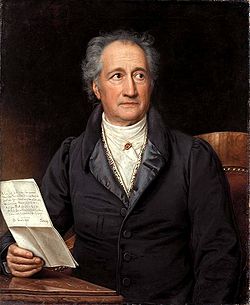

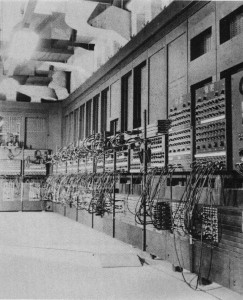
 Regular and Context Free Grammars are easily recognized because the process of parsing is linear (causal, step by step). The stucture of the language is a hierarchy.
Regular and Context Free Grammars are easily recognized because the process of parsing is linear (causal, step by step). The stucture of the language is a hierarchy.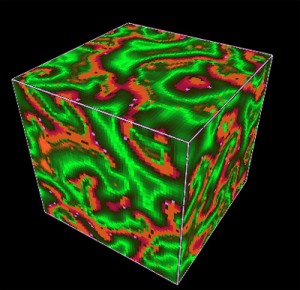
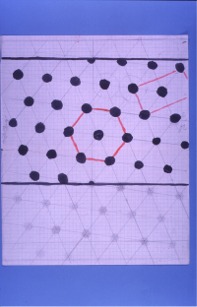
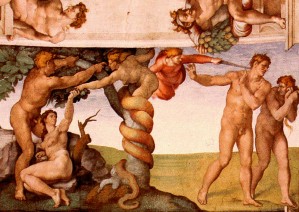

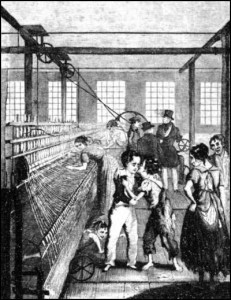

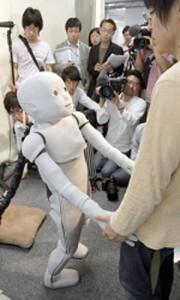

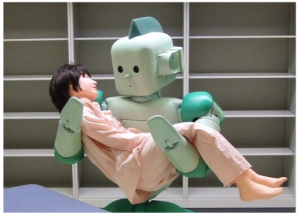
 One of the most important causes of the current economic crisis is Rationalism.
One of the most important causes of the current economic crisis is Rationalism. The effect of Rationalization is tremendous. An enormous Amount of Work has been rationalized and this development is not at its end.
The effect of Rationalization is tremendous. An enormous Amount of Work has been rationalized and this development is not at its end. A recent “invention” are Artificial Manipulated Worlds, Highly Addicting Computerized Mass Games to keep the Customers busy and asleep.
A recent “invention” are Artificial Manipulated Worlds, Highly Addicting Computerized Mass Games to keep the Customers busy and asleep. The only way to survive is to merge and become the “leader of the global pack“, the Monopolist. At this moment we are in the end game of the Global dominance of a few Big Corporations. The most important factor is and will be the Control over the Mass Media.
The only way to survive is to merge and become the “leader of the global pack“, the Monopolist. At this moment we are in the end game of the Global dominance of a few Big Corporations. The most important factor is and will be the Control over the Mass Media.
 With so much conflicting advice in the media, it can be difficult to determine the best way to eat healthily and stay in shape. For example, while some sources of information say that eliminating sugar and fat completely is the best way to stay fit, others suggest that the total amount of calories consumed is all that matters. To help clear up the confusion, the U.S. Department of Agriculture and the U.S. Department of Health and Human Services collaborated to create dietary guidelines for all people in the United States. Check these
With so much conflicting advice in the media, it can be difficult to determine the best way to eat healthily and stay in shape. For example, while some sources of information say that eliminating sugar and fat completely is the best way to stay fit, others suggest that the total amount of calories consumed is all that matters. To help clear up the confusion, the U.S. Department of Agriculture and the U.S. Department of Health and Human Services collaborated to create dietary guidelines for all people in the United States. Check these 

 The knowledge of the self-reference of the Dialogues is also a clue to solve more complicated puzzles about the Dialogues themselves.
The knowledge of the self-reference of the Dialogues is also a clue to solve more complicated puzzles about the Dialogues themselves.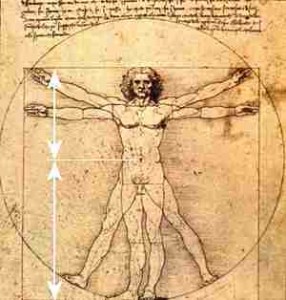

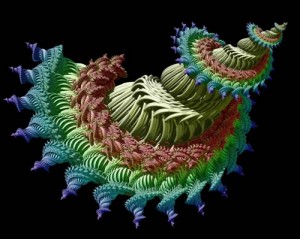
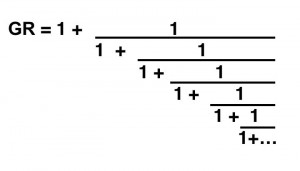 It shows a very beautiful pattern of “3″s when the Bronze Mean is evaluated in a
It shows a very beautiful pattern of “3″s when the Bronze Mean is evaluated in a